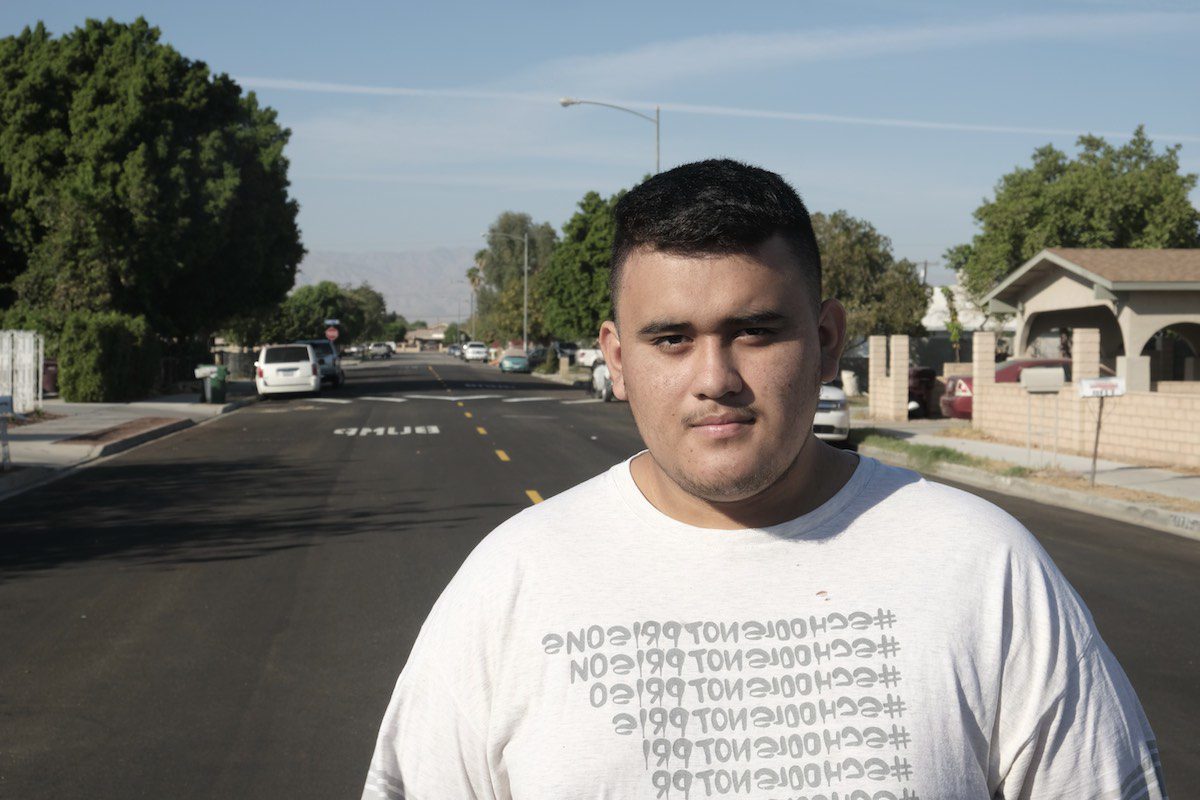 (Photo: Bryan Mendez/Coachella Unincorporated)
(Photo: Bryan Mendez/Coachella Unincorporated)
By Olivia Rodriguez
Marco Romero is no stranger to activism. Since middle school, he’s been on the front lines – doing door-to-door canvassing – connecting residents in the Eastern Coachella Valley with resources they need.
But when the pandemic hit last year, the state’s shelter-in-place orders and social distancing guidelines changed how Romero communicated with residents in his community, but it didn’t alter his mission. Instead of meeting face-to-face, he relied on phone banking. Working with Alianza, a local organization in the Eastern Coachella Valley, he wanted to find ways to support residents who might be disproportionately affected by COVID-19.
“I want to see a change in these rural areas that I live in,” he said. “[I want to] help my parents. They get paid below minimum wage. They came from Mexico — they came to see the American dream, but I don’t know how that American dream looks like now.”
He admits there are a few challenges to remote activism.
“At home, you don’t get that privacy — my family is here. And when you’re at the office, you can focus on making phone calls because everyone around you is doing the same,” he said. “You also don’t get to meet people in person [since] everything is online.”
Romero isn’t alone as many youth activists have been instrumental in connecting community members to resources during the pandemic in the Eastern Coachella Valley.
“The youth are bilingual; that’s something really important to highlight,” said Patricia Carillo, project manager for Alianza. “I would say more than 50% of the calls have been in Spanish. It’s really great to see the students not only being able to work with English community members but Spanish community members, and how committed they are to the work that they do.”
Young adults in the Eastern Coachella Valley have been instrumental in reaching over 73,000 community members for efforts tied to Census and voting outreach, food assistance and other COVID-19 educational information, Carillo said. Specifically, they’ve connected over 1,300 families throughout the Coachella Valley to economic relief funds in efforts organized by Alianza, she said.
“When I was doing the calls, community members shared with me that they’re farmworkers who had just lost their jobs, tested positive for COVID, some parents had to stay home to take care of their kids because of distance learning, and some didn’t have money to cover their finances,” Romero said. “They would call back and say, ‘Gracias, porque necesitaba este dinero’ (Thank you, I needed the money). They’re overwhelmed.”
Carrillo says that the pandemic has amplified the need for better Wi-Fi connectivity in rural areas. “Many of the youth had to rely on hotspots to be able to continue the work with phone banking,” she said. “Connectivity issues have been very concerning for the youth that have to rely on hotspots or go to one of their family member’s homes to be able to connect and do the work from there.”
But Wi-Fi is just another layer of accessibility issues that people face, Romero said.
“Before COVID-19, I would gather a group of friends in my car and give them a ride,” he said. “We canvassed all throughout the ECV area. I would really like to see youth have more Wi-Fi, computers, stuff like that to be able to join community events. More people can be more involved if Wi-Fi is not an issue. Since everything is through Zoom, you can just click and join.”
Despite his passion, Romero, a freshman at San Jose State University, had to take a brief break to concentrate on school. But he has big plans for the future. After graduation, Romero plans to continue organizing in the Eastern Coachella Valley.
“There’s a lot of injustices around the world. I love to do this work and motivate other youth to improve their community as well,” he said.
This story was produced by Coachella Unincorporated and is part of a collaborative project “Behind Our Masks” that includes content from young journalists from YR Media, Boyle Heights Beat, The kNOw and Coachella Unincorporated.
From education, to family, to employment, the pandemic has deeply impacted the younger generation, particularly young people of color. Click here for more stories on how they’re trying to cope.